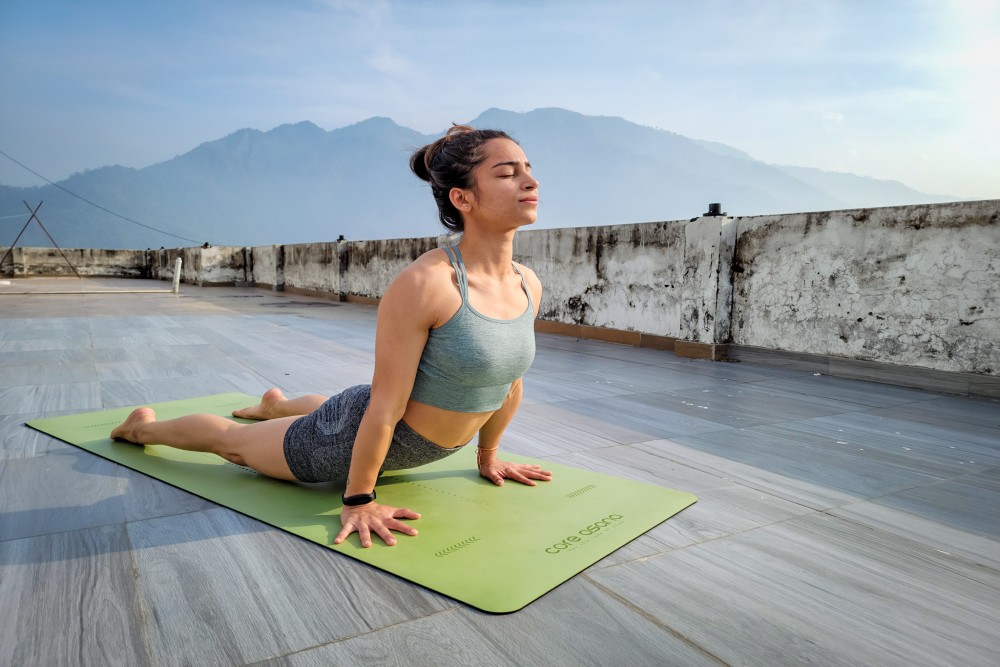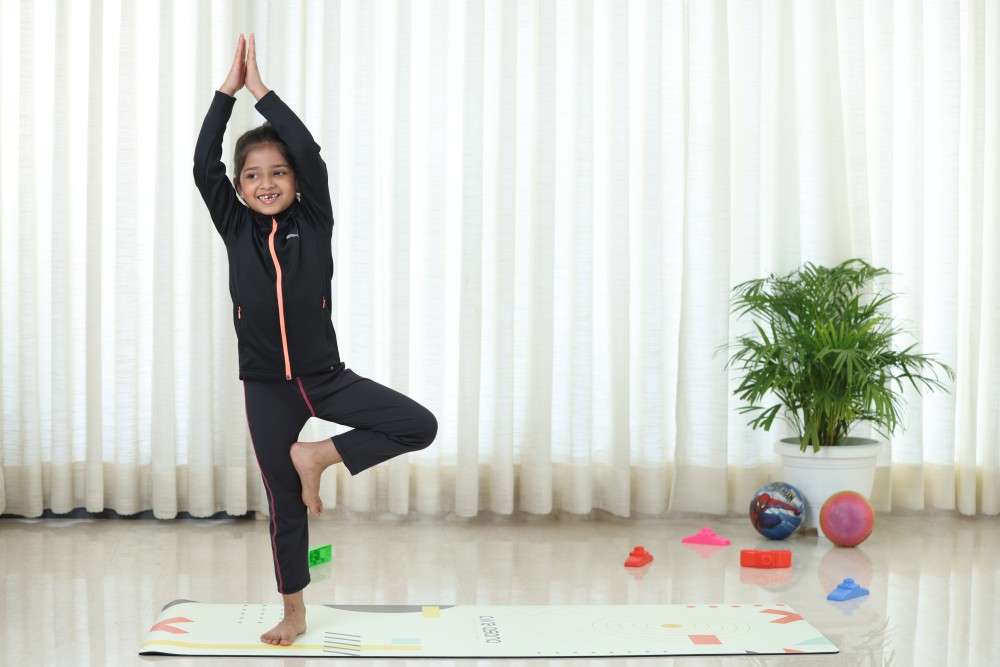Seven Gentle Yoga Poses (Asanas) for Beginners
Yoga can provide a sense of calm and mental well-being in today's fast-paced and anxiety-filled environment.
In addition to this, Yoga improves muscle tone, flexibility, and balance. And you don't have to be an expert to reap the benefits.
Are you ready to give it a shot? Just bring in your Yoga mat and try these seven gentle yoga poses (or asanas) for beginners.
Cobra Pose (Bhujangasana)

Cobra Pose relieves discomfort by opening up the shoulders and neck.
It tones the abdomen, strengthens the shoulders and entire back, increases upper and middle back flexibility, and lessens stress and fatigue.
- Begin by lying on your stomach with your forehead resting on the floor and entire body extended.
- Keep your toes touching the ground and your feet together.
- Bring your hands palms facing down directly underneath your shoulder blades
- As you inhale, press through the hands to lift your head, chest, and abdomen while keeping your navel on the floor.
- Use your back and abdominal muscles to lift as high as you comfortably can into a deeper backbend.
- Hold this position for few breaths.
- Exhale slowly and come to a halt with your hands below your head.
Standing Forward Bend (Uttanasana)

One of the first postures a new yogi learns can be Uttanasana. Standing Forward Bend calms the brain and helps relieve stress.
Along with stretching the hamstrings, calves, and hips, this pose also stimulates the liver and kidneys.
- Begin in Tadasana (Mountain Pose) keeping whole body in straight line and aligned position.
- Extend your arms overhead as you inhale.
- Exhale to hinge from the hips and bend forward and fold your torso over your legs all the way towards the feet.
- Keep your legs and spine straight with hands resting either on the floor, beside your feet or on your legs.
- Inhale and expand your chest to lengthen your spine.
- Extend your torso down without rounding your back while exhaling.
- Stay in the pose for at least 30 seconds.
Low Lunge Pose (Anjaneyasana)

Low Lunge stretches the thighs and groins and opens up the chest.
It provides post-workout recovery, and boosts energy while consciously working to improve body posture.
- Stand at the beginning of the yoga mat.
- Take a big step backwards with one foot.
- Take in a deep breath. Bend your front knee so that it comes directly over top of your ankle as you exhale.
- Push your weight through your back heel while keeping your heel planted on the ground.
- Take a deep breath and reach up with your arms. Reach for the sky while palms facing each other.
- Hold the pose while taking deep breaths.
- Repeat the steps on the other side for the same duration.
The Easy Pose (Sukhasana)

It can be calming and relaxing if you can sit comfortably in Easy Pose.
It increases postural awareness, removes the tensions around back, shoulders and arms, establishes groundwork for meditation practices, and reduces stress.
- Sit on the floor or yoga mat.
- For those with tight hips, sit on top of a yoga block, bolster, or folded towel.
- Stretch out your legs in front of you.
- Cross your shins and bring each foot under the opposite knee.
- Rest your hands on top of your knees.
- Keep your shoulders straight and spine neutral. Relax!
- Hold this position for as long as you are comfortable.
- Release the pose, change the cross of your legs and repeat.
Tree Pose (Vrikshasana )

Tree Pose is a standing balance for beginners to practice in order to gain focus and clarity, and to learn to breathe while standing and remaining balanced on one foot.
It replicates a tree's steady stance.
- Stand with your feet hip width apart.
- Transfer your weight to your right foot.
- Raise your left leg and turn your knee outwards gently.
- Place your left foot inside your right calf or above your knee, but never on the knee.
- When you feel steady, stretch your arms overhead and bring your palms together in ‘Namaste’ mudra.
- Focus your gaze on something that doesn't move to help you maintain your balance.
- Hold the position for several breaths.
- Step back and repeat on the other side.
Corpse Pose (Savasana)

No yoga session is complete without performing a Savasana at the end.
Savasana allows the body to absorb the full benefits of the yoga workout and it helps to reduce stress and moderate depression by calming the brain.
Additionally, it helps to regulate blood pressure, lessens headache, weariness, and sleeplessness.
- Lie down on your back.
- Extend your legs slowly with your feet apart and toes turned out.
- Extend your arms and place them alongside your body but slightly separated from your torso. Keep them relaxed at your sides with palms facing up.
- Relax your whole body, including your face. Let your body to feel heavy on the ground.
- Stay in this pose for at least 5 minutes.
6. To exit the pose, start with deepening your breath. Bring gentle movement and awareness back to your body.
Triangle Pose (Trikonasana)

The Triangle Pose is beneficial for strengthening the thighs, torso as well as stretching the spine.
This position extends the spine, shoulders, chest, hamstrings, hips, and groin.
This posture also stimulates the abdominal organs, which enhances digestion.
- Stand straight. Set your feet a comfortable distance apart.
- Turn your right foot out 90 degrees and bring your left foot in slightly.
- Align your right heel with your left heel.
- Exhale and straighten your waist while extending your torso to the right, bending from your hip joint.
- Reach your right hand down toward the floor and stretch your left arm toward the ceiling. Your hands, arms and shoulders should form a straight line, perpendicular to your yoga mat.
- As you inhale, come up and bring your arms down to your sides, and straighten your feet.
- Hold this pose for 30 to 60 seconds and then switch sides for the same amount of time.












